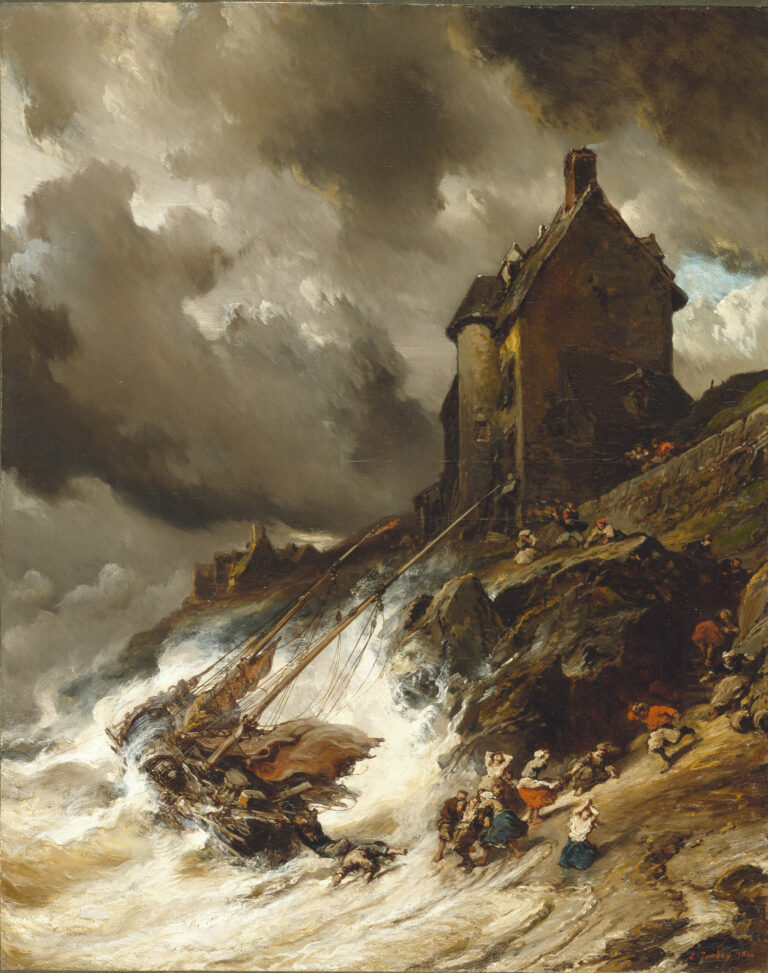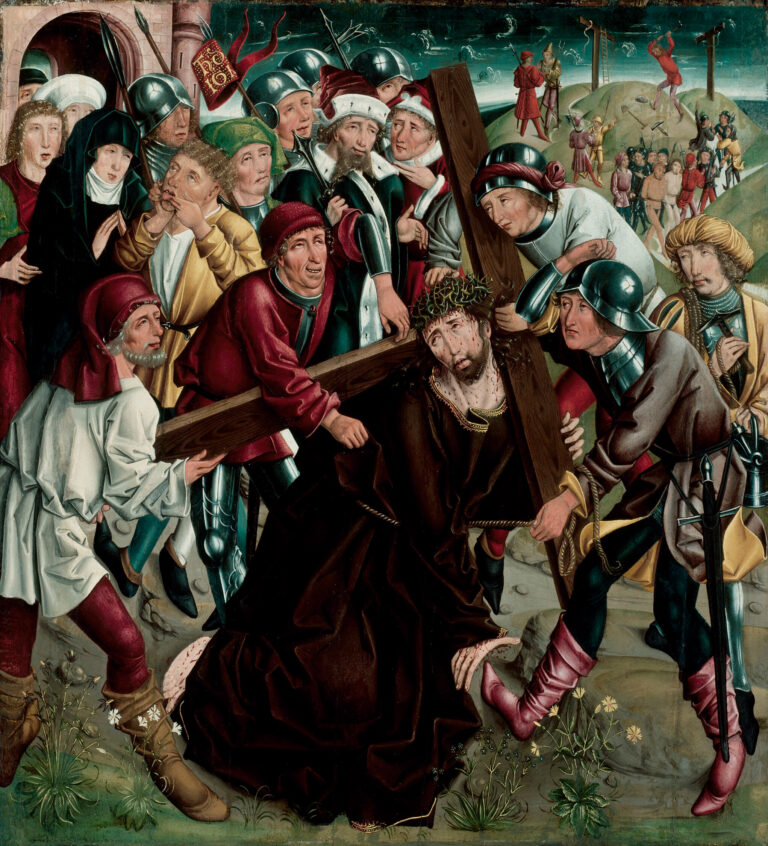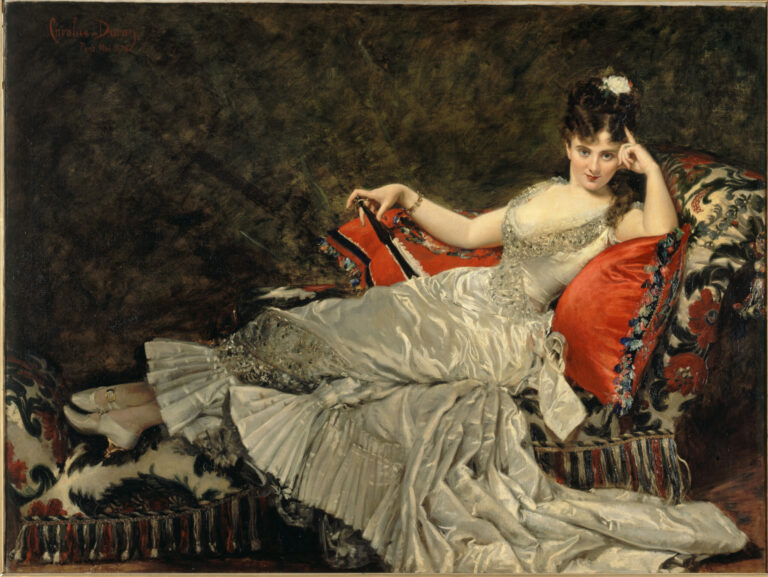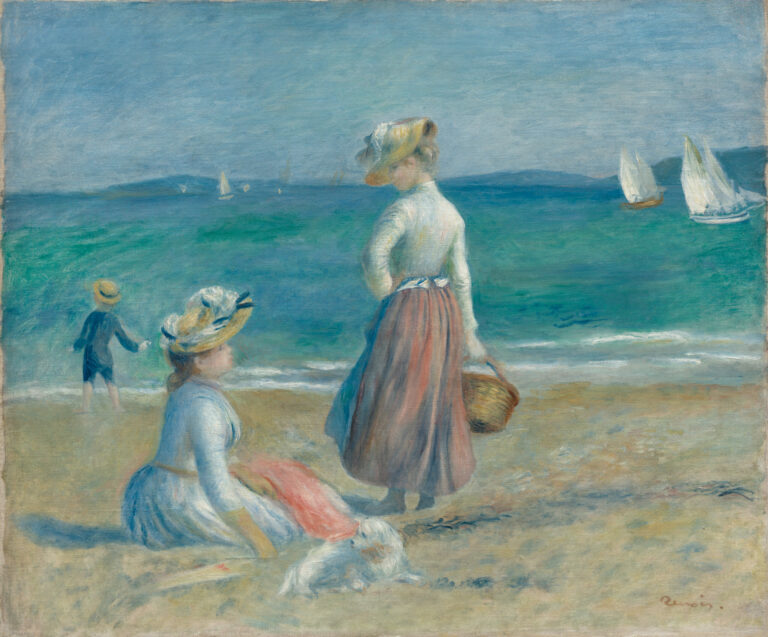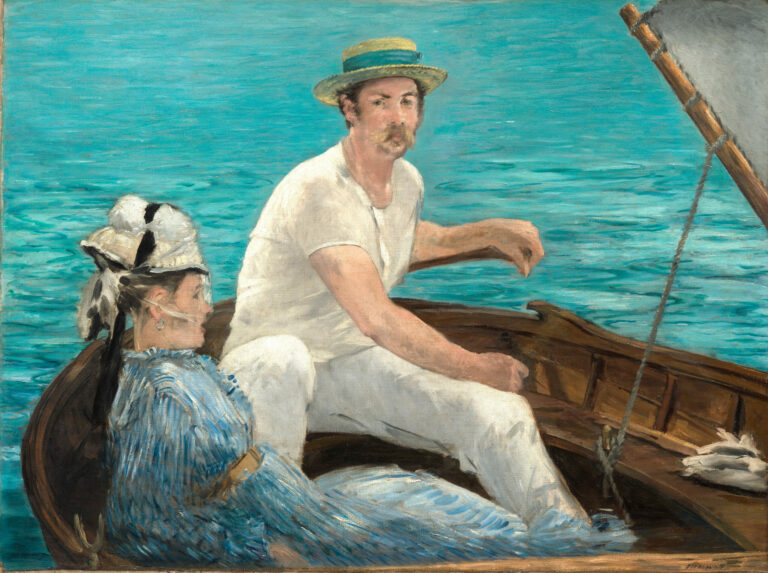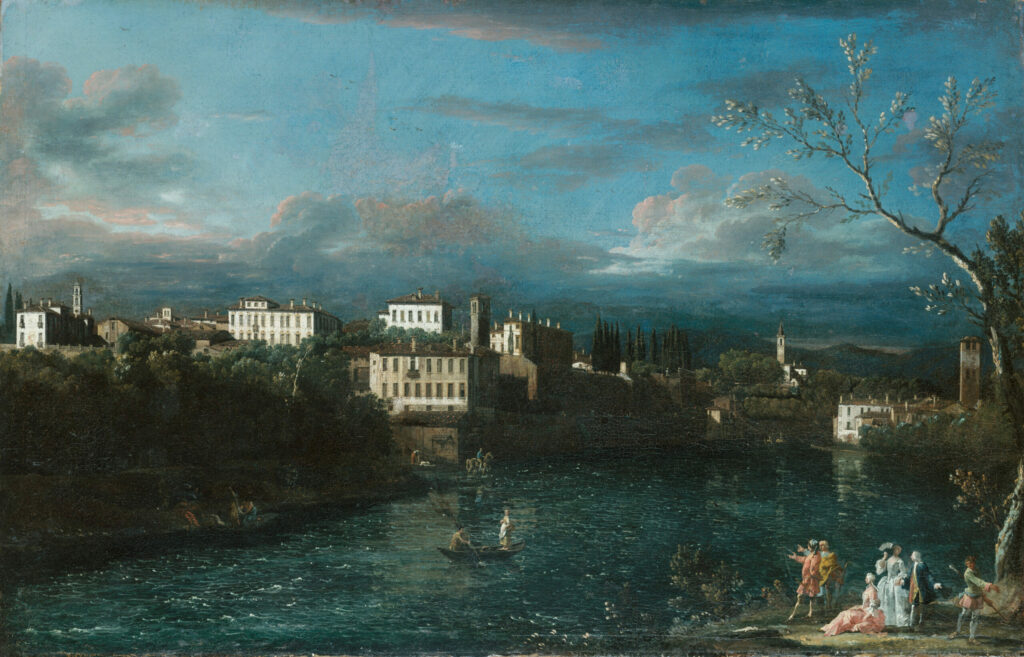
This Lombard veduta (urban landscape) illustrates Bellotto’s technical mastery in the art of topographical landscape.
The artist skillfully orchestrates the sunlight that strikes the white facades overlooking the Adda, precisely revealing the vernacular architecture of Canonica d’Adda (on the right) and Vaprio (in the center). The dark waters of the river create a dynamic foreground, while the villages are harmoniously arranged on the hills. Elegantly dressed figures—true substitutes for the viewer—contemplate this picturesque panorama with interest, their expressive gestures conveying admiration for the beauty of the site. This mise en abyme underscores the contemplative function of the work. The sky tones contrast with the deep greens of the vegetation, creating a poetic atmosphere characteristic of vedutismo. Created in 1744 for Count Simonetta, this canvas testifies to the enthusiasm for topographical views, mirrors of a prosperous and harmonious Italy.
Further information
- Vaprio d’Adda, by Bernardo Bellotto, 1744
- 25 1/4 x 39 1/4 in. (64.1 x 99.7 cm)
- The Metropolitan Museum of Art, Fifth Avenue, New York, not on view
- https://www.metmuseum.org/art/collection/search/435647
Nephew and student of Canaletto, Bernardo Bellotto (1721-1780) perpetuated and renewed the Venetian tradition of veduta. Trained in his uncle’s workshop, he quickly developed a personal style characterized by more dramatic lighting and more theatrical compositions. Unlike Canaletto, who concentrated on Venice, Bellotto traveled throughout Europe, meticulously documenting the urban landscapes of Florence, Rome, Turin, then Dresden and Warsaw where he became court painter. His technique, of photographic precision before its time, combines scientific observation with poetic sensitivity. His works constitute invaluable historical testimonies today on 18th-century European architecture and urbanism.

